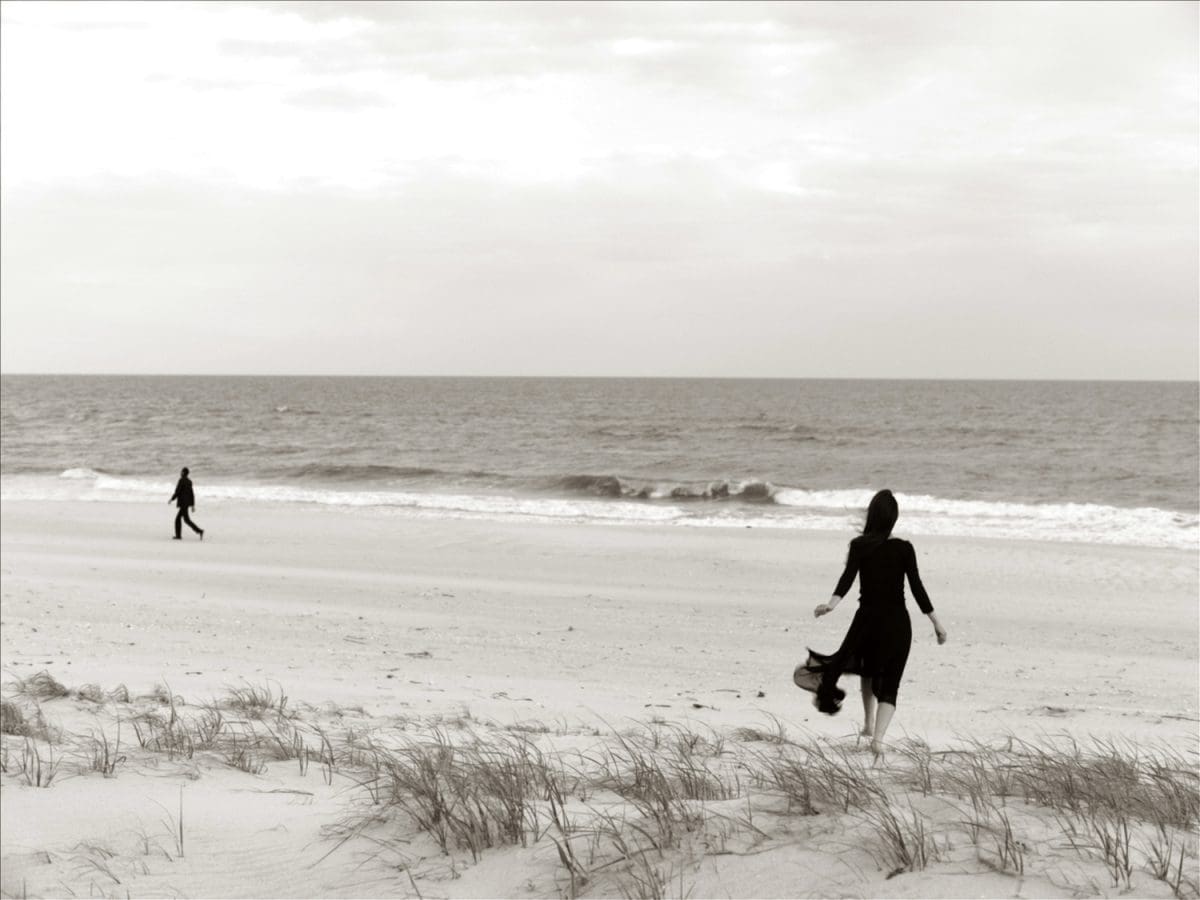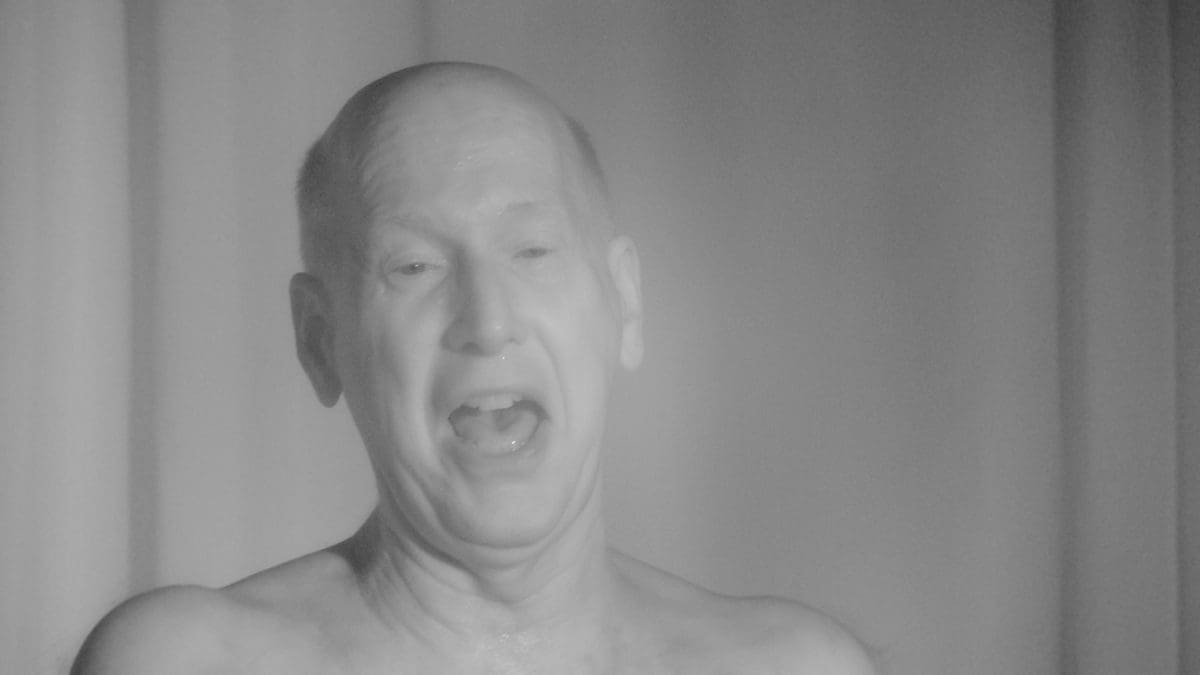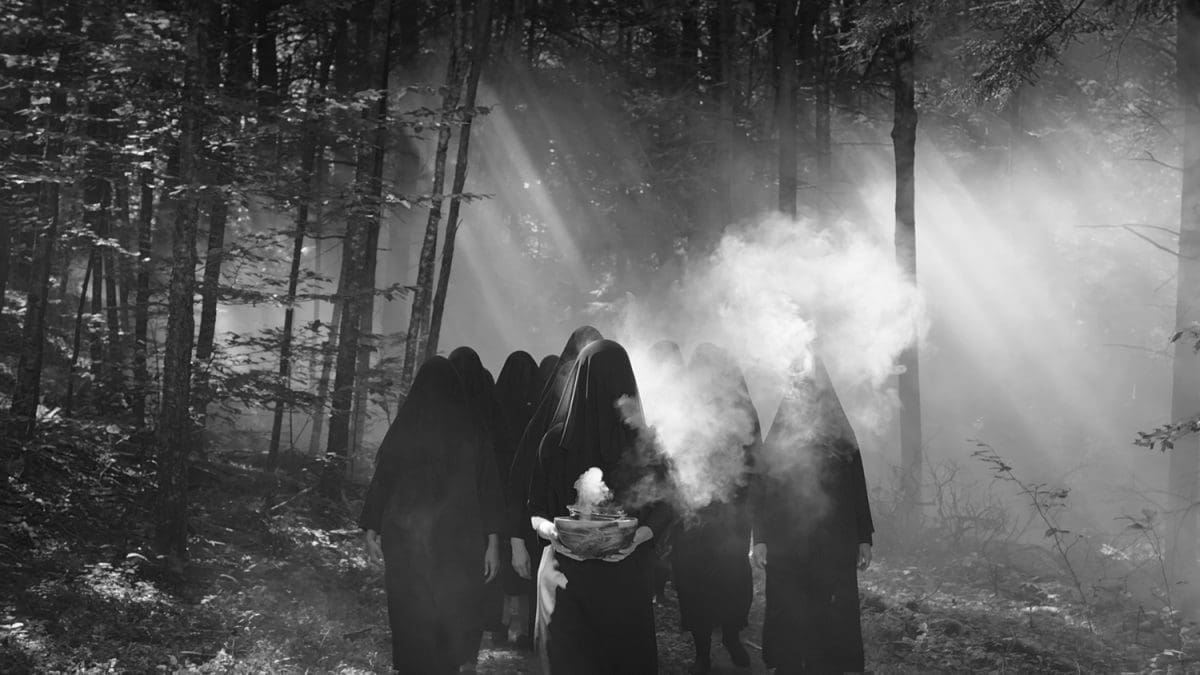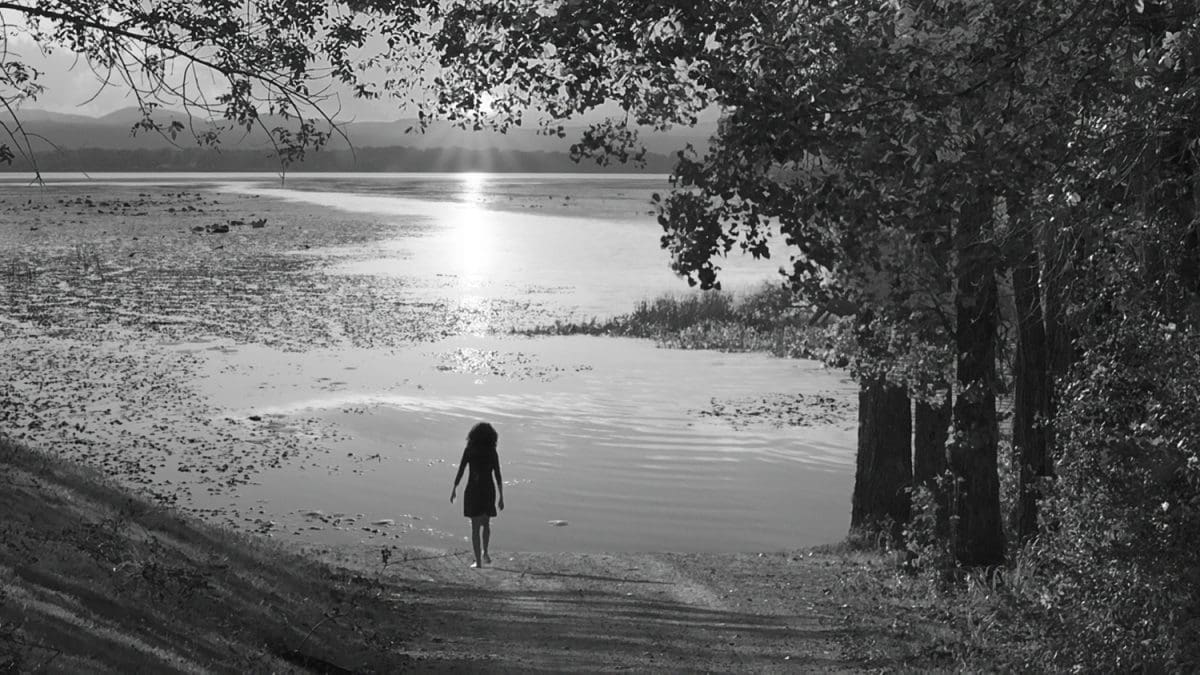
Piercing the veil
A new exhibition at Buxton Contemporary finds a rich complexity in the shadowy terrain between life and death.

Shirin Neshat, Illusions & Mirrors 2013 (still), black and white, XX film. Courtesy the artist and Gladstone Gallery, New York and Brussels © Shirin Neshat.

Shirin Neshat, Illusions & Mirrors 2013 (still), black and white, XX film. Courtesy the artist and Gladstone Gallery, New York and Brussels © Shirin Neshat.

Shirin Neshat, Illusions & Mirrors 2013 (still), black and white, XX film. Courtesy the artist and Gladstone Gallery, New York and Brussels © Shirin Neshat.

Shirin Neshat, Illusions & Mirrors 2013 (still), black and white, XX film. Courtesy the artist and Gladstone Gallery, New York and Brussels © Shirin Neshat.

Shirin Neshat, Roja 2016 (still), single-channel video installation, duration: 17 min, 15 sec. Courtesy the artist and Gladstone Gallery, New York and Brussels © Shirin Neshat.

Shirin Neshat, Roja 2016 (still), single-channel video installation, duration: 17 min, 15 sec. Courtesy the artist and Gladstone Gallery, New York and Brussels © Shirin Neshat.

Shirin Neshat, Roja 2016 (still), single-channel video installation, duration: 17 min, 15 sec. Courtesy the artist and Gladstone Gallery, New York and Brussels © Shirin Neshat.

Shirin Neshat, Sarah 2016 (still), single-channel video installation, duration: 12 min, 55 sec. Courtesy the artist and Gladstone Gallery, New York and Brussels © Shirin Neshat.

Shirin Neshat, Sarah 2016 (still), single-channel video installation, duration: 12 min, 55 sec. Courtesy the artist and Gladstone Gallery, New York and Brussels © Shirin Neshat.
In 1975, at age 17, Iranian photographer and filmmaker Shirin Neshat left her birth country to study in Los Angeles – home to the largest Iranian population outside Iran. She returned in 1990 after Ayatollah Khomeini’s death, and was stunned by post-Revolution Iran.
Since then, the now New York-based artist has been making work almost exclusively relating to her birth country: about her relationship with it, about life as an artist in exile (she has been banned from entering the country for offending the regime), but also, significantly, about Iran’s women. Neshat has expressed in the past that Iranian women – and effectively Muslim women around the world – are not victims, as they are so often portrayed in Western narratives.
Through her work Neshat negotiates being a woman of two worlds – Eastern and Western, Iranian and American. With one foot in the west and the other in Iran, Neshat has a fascinating perspective, one that gives her a voice that can – and does – represent and speak for many Iranians and Iranian émigrés worldwide. Although it was not her intention to become a political artist – in a TED Talk in 2010 Neshat said her art had first and foremost come from a personal place – as someone living in exile, it is probably unavoidable for the political and personal to be intertwined.
Although she graduated from art school in 1983, Neshat didn’t fully embrace art as a career until many years later. In fact, she didn’t make any art for 10 years. In the late 1990s, recognition for Neshat came after the exhibition of Women of Allah, 1994, the photographic series inspired by what she saw on her trip to Iran in 1990. The series is made up of black-and-white portraits of women in veils carrying weapons (including Neshat herself in the photograph titled Rebellious Silence), overlaid with Farsi poetry. It was an explosive commentary on gender, politics and violence from a female, Islamic perspective. And though we may take it for granted in a post-Internet and post-globalised world, at the time, Women of Allah provided an insight into a complex, nuanced issue at a time when such commentary was rare. Since then, Neshat has continued to create art that is just as complex, more ambitious and more challenging.
It’s interesting to note that at a time when Western relations with Iran are once again becoming markedly, worryingly strained, Neshat appears to be heading in a broader direction in her work, away from the politically charged direction of her past. Neshat is looking elsewhere, beyond Iran, both physically and allegorically.
In an interview with the Los Angeles Times Neshat said she had “reached a point of exhaustion of nostalgia” concerning Iran, and with her most recent work, The Land of Dreams, she turns her lens to America for the first time. Encompassing a video and two photographic works about an Iranian immigrant’s experience in New Mexico, The Land of Dreams made its debut at the artist’s first major retrospective, I Will Greet the Sun Again, at the Broad in Los Angeles, in October.
But this shift in Neshat’s work occurred even prior to The Land of Dreams. In 2013, Neshat produced Illusions and Mirrors, the first in the Dreamers trilogy, as an homage to Surrealist cinema, and its luminaries, such as Luis Buñuel, Maya Deren and Man Ray. At the debut of Illusions and Mirrors at the Montreal Museum of Fine Arts, Neshat herself admitted that this body of work was a big departure for her both stylistically and also thematically – a conscious decision to move away from Iran and Islam towards a more universal story.
Of this shift, Maidment says that “her more recent work is still very much rooted in her biography and experiences, but they are also more about the universality of dreams.”

In Illusions and Mirrors, a Hollywood actor – Natalie Portman – features in Neshat’s work for the first time, creating a strange crossover between art, cinema and fashion (the film was supported by Dior). And although it is stills from Illusions and Mirrors featuring Portman that are being used to promote the exhibition at the NGV,Sarah and Roja, both completed in 2016, shouldn’t be forgotten. Maidment says that while Illusions and Mirrors may be more visually dramatic and experimental, Sarahand Roja carry more emotional weight.
“For me in particular – and I hope she won’t mind me saying this – the most successful is Roja. I think it’s really about her and her mother, and her cultural identity, which is perhaps a little unresolved. For me, that’s by far the most powerful, even though it’s more personal rather than ‘political’. When it goes into that zone, that’s when it’s most powerful,” Maidment says.
All three black-and-white films in Dreamers depict women journeying through a blurry state somewhere between reality and dreams; a place where emotions are heightened and the conscious and subconscious are impossible to split apart.
At the NGV, Maidment says viewers will be navigating this dream state themselves, a conscious curatorial choice made possible through the exhibition design and layout. Rather than conventionally screening the films in a theatrette, visitors will be viewing the films while navigating the gallery space as the films’ protagonists navigate theirs. It’s an experience that is rooted in Neshat’s world but also transcends it – a physical manifestation of the shift in Neshat’s work.
Shirin Neshat: Dreamers
National Gallery of Victoria
15 November– 19 April 2020